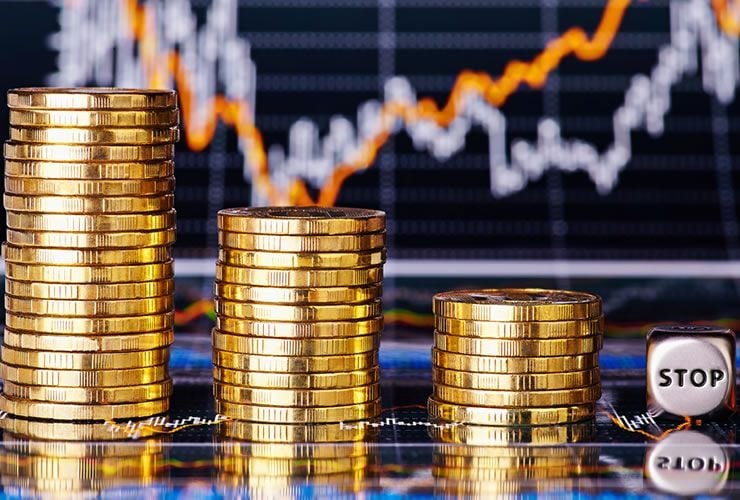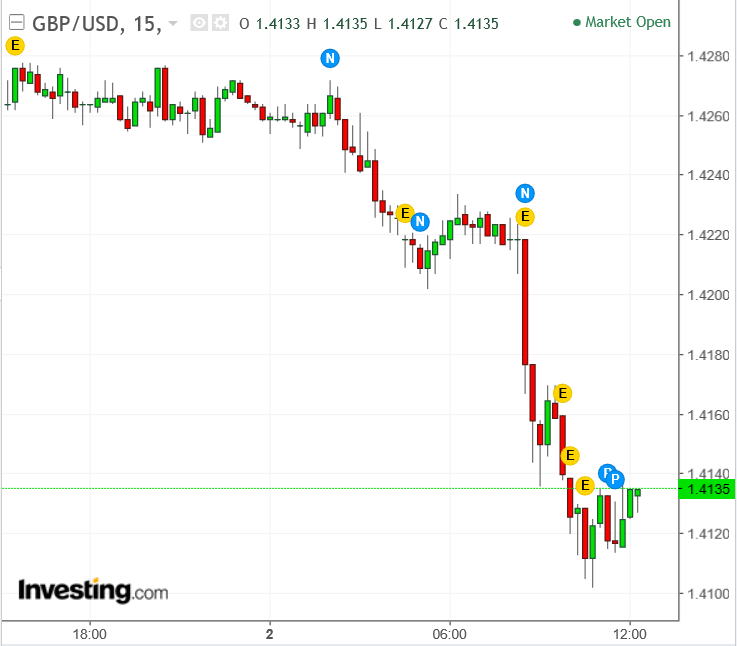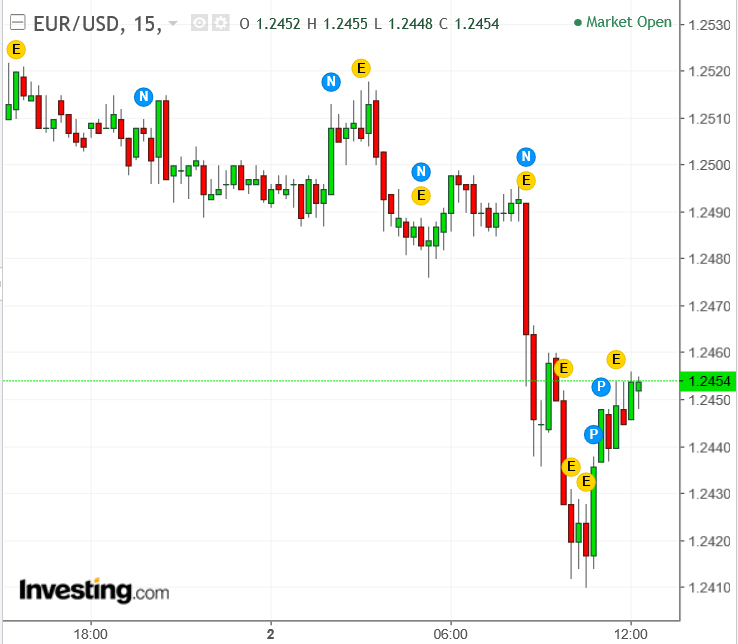US Dollar Rises By Almost 1.0% After Payrolls Data; Four Interest Rate Hikes Now Eyed

The US Dollar rallied on Friday following strong labour market data; analysts see a chance of interest rates rising by a full 1.0% in 2018.
The Dollar has strengthened by between 0.50% and 1.25% against various major pairs in the Forex market on Friday after the release of Non-Farm Payrolls data (NFP) indicated higher-than-expected hiring and, perhaps more significantly, an unexpected rise in wages in January.
According to data released by the US Bureau of Labour Statistics US Non-Farm Payrolls increased by 200k in January, up from 148k (which was itself revised up to 180k) in the previous month and higher than the 184k forecast by economists.
The overall unemployment rate remained at a 17-year low of 4.1%.
The data also showed a 0.3% rise in wages in January, in line with expectations and the previous month's 0.3% rise, which itself was revised up to 0.4%.
Compared to January 2017, workers salaries rose by a very strong 2.9% (yoy), which was well above the consensus estimate of 2.6% and the previous month's 2.5% and may well have been one of the main contributing factors to the rise in the Dollar, since headline payrolls levels have been having increasingly less of an impact since unemployment reached current historic lows.
"The January employment report was just what the Fed ordered to justify the next leg of its rate hike path. The job gain of 200K and a steady unemployment rate of 4.1% weren't particularly remarkable, but a 0.3% rise in hourly earnings, coupled with upward revisions to the prior month, brought the 12-month wage pace to 2.9%. That's still a bit light for the Fed's final destination, but heading in the right direction," says Toronto-based CIBC Capital Market's economist Avery Shenfield in response to the report.
Other data showed a fall in the average hours worked to 34.3 from 34.5, however, which was a bad sign as it suggested companies are constrained in the number of hours they can offer staff or an increase in part-time work which is usually less well paid.
The Pound-to-Dollar pair fell to 1.4165 initially but bottomed even lower at 1.4102 several hours later - from a pre-release 1.4220.
EUR/USD, meanwhile, weakened to a trough low of 1.2417 from a pre-release level of 1.2493.


Inflation Expectations On the Rise
The better-than-forecast labour market data, especially wages, had a knock-on effect on inflation expectations pushing them higher, which was the root cause of the rally in the Dollar.
A strong labour market usually translates into rising pay as the available pool of jobseekers reduces and employers have to pay more to attract talent, but this hasn't been happening in this labour market and economists have been scratching their heads trying to figure out why.
Today's data suggests the cause and effect relationship between low unemployment and higher wages may be starting to operate more reliably, after both pay end employment rose, with January wages up 2.9% compared to a year ago, and whilst this still isn't as high as the Federal Reserve (Fed) would ideally expect to see it based on their models, it is still a big improvement from the 2.5% in December.
Normally higher pay translates into higher inflation as workers have more disposable income to spend and higher inflation, in turn, leads to higher interest rates, which then, in turn, pushes up the Dollar, because foreign investors are more inclined to send their money to the US because of the higher interest returns on offer.
The Fed puts up interest rates when inflation starts getting out of hand, and this jobs report has increased the chances of the Fed having to raise rates more rapidly than previously supposed.
"Overall, this report supports the Fed’s contention that the jobs market is nearing full capacity and wage and inflation pressure has begun to make its way into the data. With almost full odds priced in for a March rate hike, investors have moved towards the second, third, or even possible fourth rate hike this year." Says Marvin Loh, Senior Market Strategist at BNY Mellon.
The Fed itself had always expected to have to increase interest rates three times in 2018 - the market less so, only twice, but since today's report the market is now firmly in line with the Fed's expectations of three and a slightly over 50% chance of four - or one per quarter.
The reason we know what the market 'thinks' is because it is reflected in financial instruments used to speculate on interest rates like Feds Funds Futures and these fluctuate according to changing market perceptions.
"Our thought has been that the risk has always been towards four hikes versus two and recent data supports that view. At this point, the market is implying a 70% chance of three hikes by year-end, a figure that has increased from just 30% after the December hike. It is additionally worth noting that Bloomberg data indicates that there is at least even odds of a hike in each quarter this year," adds Doh.
The chart below provided by Aussie bank Westpac also suggests the market is expecting nearly three hikes in 2018 now.
The first column shows the dates of future Fed meetings at which they might raise interest rates. The second column shows the market expectation of the Fed's base interest rate calculated from the price of overnight index swaps (OIS). The third column shows the aggregate interest rate change in basis points - so divide by 100 for the percentage; the fourth column notes the change in basis points expected from one meeting to the next.
If we look at the next meeting in March, according to the market, there is now a 99% chance the Fed will increase interest rates by 0.25% (25bps) from a current upper band of 1.50% to a median rate of 1.623% (or 1.75% upper band).
Now looking at the last meeting of 2018 on December 19 we can see that OIS is pricing in a median rate of 2.127% (2.25% upper band), which suggests three rate hikes in the remainder of the year, as verified by column three which register 71 bps or 0.71% total rise in the interest rate - almost three but not quite as its 4bps off - but nevertheless near enough.
Get up to 5% more foreign exchange by using a specialist provider to get closer to the real market rate and avoid the gaping spreads charged by your bank when providing currency. Learn more here.
